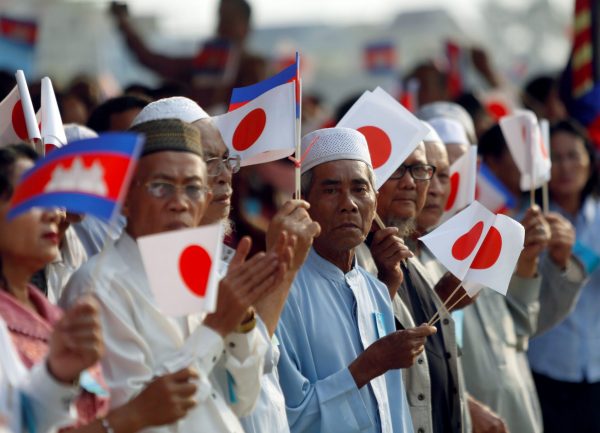Japan intends to provide aid that not only will construct highways and bridges, but will also directly facilitate trade in the Mekong region. This will be done through the improvement of customs procedures at national borders, the development of human capital and the establishment of trade networks for better flows of people and goods.
Infrastructure-wise, Japan pledged to provide foreign aid for developments including the ‘Southern Corridor’ to connect Ho Chi Minh City, Phnom Penh and Bangkok, and the ‘East–West Corridor’ to connect Da Nang in Vietnam and Mawlamyine in Myanmar. At the same time, Japan has also promised to help drive the accumulation of human capital in coming years by providing industrial training for more than 40,000 people in Asia, including the Mekong countries.
The Mekong region has emerged as a new growth centre of Asia. From a demographic perspective, the region’s combined population was a substantial 236 million in 2015. Excluding Thailand, the population is young, with more than 20 per cent of residents below 15 years of age. In 2015, the combined total gross domestic product in the region amounted to US$673 billion and, with the exception of Thailand, the growth rates of all the Mekong region countries exceed 5 per cent. These favourable demographic and economic factors make the region an attractive potential market for Japanese investments and products.
In the past, Japan’s aid strategy was often criticised for its single-minded focus on infrastructure development. But under its new strategy, Japan’s aid is increasingly concentrating on developing not only the ‘hard’ but also the ‘soft’ infrastructure in the Mekong region.
This new direction in Japan’s aid policy in the Mekong region is rooted in Abe’s grand diplomatic design — the US-inspired ‘Free and Open Indo-Pacific Strategy’. This strategy aims to establish links between the Southeast Asian mainland, the Pacific Ocean and the Indian Ocean. Located at the heart of the Indo-Pacific, the Mekong region is vital for the overall success of this ambitious strategy.
Under this strategy, Abe pledged that Japan would be more proactive in contributing to peace, stability and prosperity in the region through quadrilateral cooperation between the United States, India, Australia and Japan. This means that Japan would need to engage and seek active support from these three countries in its efforts to implement the new strategy.
There are doubts surrounding whether this quadrilateral mechanism will work considering the existence of two other geopolitical frameworks in the region — ASEAN’s regional architecture with its ASEAN Centrality, and China’s ambitious development strategy, the Belt and Road Initiative (BRI). On 2 August 2018 during the ASEAN foreign ministers’ meeting in Singapore, it was emphasised that the ‘Indo-Pacific’ strategy should be based on the concept of ASEAN Centrality. In other words, the ‘free and open’ Indo-Pacific region should be created by enforcing rules-based ASEAN-centric mechanisms.
In the same meeting, Chinese Foreign Minister Wang Yi commented that China would welcome the quadrilateral mechanism for security and economic cooperation in the region. But he pointed out that the funding associated with it was too small for such a grand design.
There is a notable contrast between China’s and Japan’s aid strategies in the region. China is focussing on supporting ‘hard’ infrastructure projects while Japan is keen to develop ‘soft’ infrastructure.
China promised to provide US$10 billion under the Lancang–Mekong Cooperation (LMC) scheme for various infrastructure development projects, including the construction of hydropower dams, railways and industrial parks. Whereas Japan put US$7.5 million towards the general elections in Cambodia that were held in July 2018.
These differences in the two countries’ aid strategies indicate a possibility that China’s BRI and Japan’s Indo-Pacific strategy could complement each other and play a constructive role in the region. Abe’s special adviser Sonoura dismissed the possibility that Japan’s new aid strategy would be a threat to ASEAN Centrality or the BRI. And he has stated that Japan would seek ASEAN to play a central role and that the new aid initiative is in no way intended to contain China.
In the colonial past, the Mekong region was divided between two rival powers — Great Britain and France. With recent developments, the Mekong countries may want to work out an astute and ingenious diplomatic policy in order to counteract potentially contradicting interests in the region. Otherwise, the Mekong countries could once again find themselves becoming a ‘playground’ for rivalling big powers in Asia.
Fumitaka Furuoka is a visiting senior research fellow at the Asia-Europe Institute within the University of Malaya.

